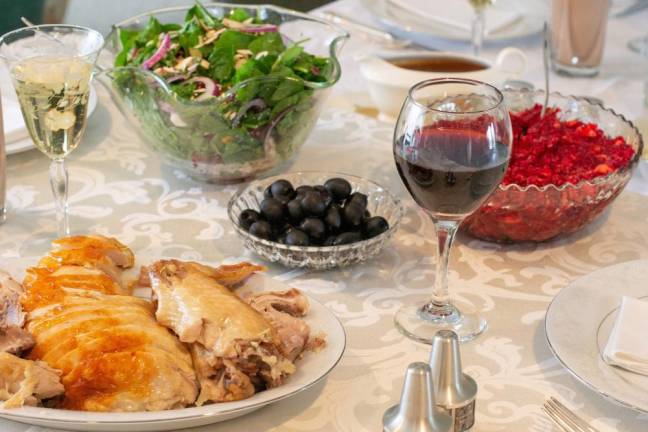Placating Picky Palates
Some food aversions are matters of taste, culture, principle - and genes

There’s always one at the table. You know, the person who while everyone else was chowing down on turkey and yams on Thanksgiving sat there pushing his food around and separating the peas from the carrots and cranberry sauce just like TV’s San Francisco detective Adrian Monk. Did he just want a really neat plate? Or did he hate peas? Or carrots? Or cranberry sauce?
If the latter, he’s wasn’t the only one. A Vactioner.com survey found that cranberry sauce is the most disliked Thanksgiving food, with nearly 30% saying they won’t be piling it on their holiday plates. Turkey was second most-disliked at just over 28%. Nobody chose peas, but those carrots? Third at 12%.
Picky eaters come in several varieties for several reasons. Some avoid specific foods that give them hives. Others just don’t like the taste or texture of what’s on the plate. Vegetarians and vegans will avoid meat a a matter of principle. And then there’s the cultural thing. Around the world, billions of people nosh on fried insects, something hard for Westerners to swallow although we enjoy what they call spoiled milk: cottage cheese to you.
So long as the list of what not to eat stays limited, no problem. But if not liking one food morphs into not liking lots of foods, there’s a name for that: Avoidant/Restrictive Food Intake Disorder (ARFID). Unlike anorexia, the eating disorder commonly driven by body dysmorphism (an unrealistic view of one’s shape and size) plus an unreasonable fear of weight gain, ARFID may result from just one unpleasant moment like serious gastric upset after downing the food or being forced as a child to eat something you definitely didn’t want.
Bitter Compounds
There’s also a genetic component, an individual oversensitivity to bitter influenced by a single gene named TAS2R38. This one gene is strongly linked to the ability to taste bitter compounds such as those found in the brassica plant foods a.k.a. cruciferous veggies so-called because their four-petaled flowers look like a cross. In alphabetic order, the 17-member group goes from bok choy to watercress but the most commonly noted offenders are broccoli, brussels sprouts, cabbage, cauliflower and kale.
Those aside, the fact is everybody has at least one dish they truly loathe. Search the Net for “foods everyone hates,” and up pop numerous lists, some counting all the way up to 100. Green stuff, primarily broccoli, makes practically every list as does liver which fails the texture test (too mushy) and also makes some people queasy when they realize they’re eating offal, the internal organs usually tossed out. In the one household where Mom served broccoli wrapped in liver, guess what the grown-up kids still won’t eat.
Happily, while food aversions may begin in childhood, they do not always last lifelong. To prove the point, Paul Rozin, professor emeritus in psychology at the University of Pennsylvania, cites the chili pepper. Infants and young children (usually) don’t like spicy food, and even older people who try it for the first time don’t always enjoy it. So how come chili and curry are so popular? Rozin calls it “benign masochism,” the act of enjoying a negative experience such as a roller coaster ride under controlled circumstances where they do not pose a threat of real harm.
Also, we grow up to look for more sophisticated culinary challenges, and there’s a website to prove that. 24 Foods You Hated As A Kid But Love Now lists 24 once detested foods with recipes to tempt an adult palate. (https://www.buzzfeed.com/tashweenali/foods-you-hated-as-a-kid-but-love-as-an-adult)
In the end, you might just want to relax and move on like the one Manhattanite who explains that when entertaining guests her family has “perfected the art of dealing with the various food preferences by having people bring side dishes of what they will eat. And my husband, an excellent cook, should have won a gold medal for the time we had friends visiting and had to deal with the following restrictions: Extreme fish and nut allergies; gluten allergy; friend’s son keeping kosher; dairy aversion. My husband made roast lamb for the meat-eaters, ratatouille, rice and salad for everyone, and bought gluten-free bread. A triumph!”